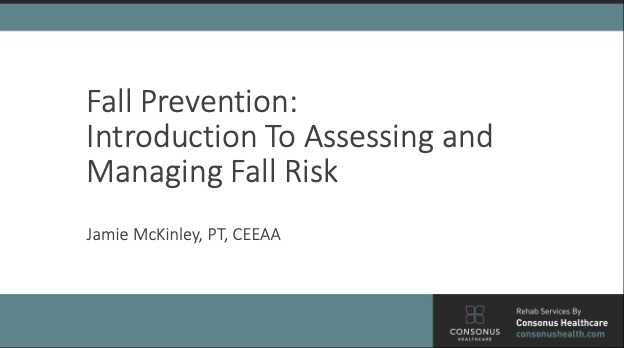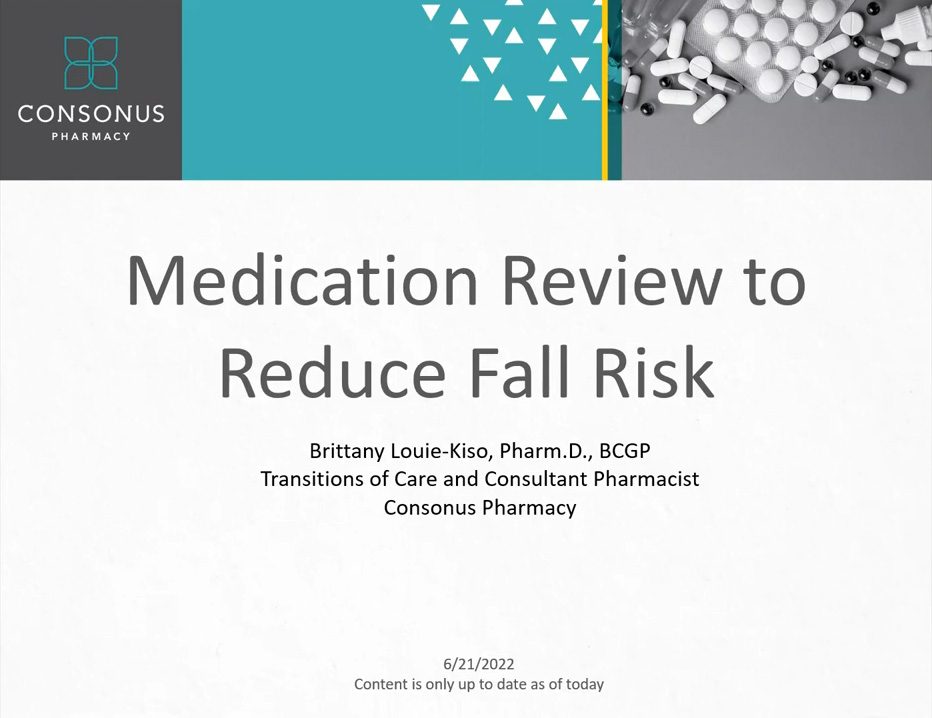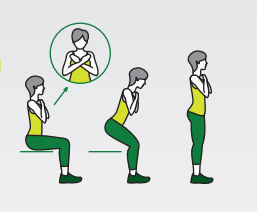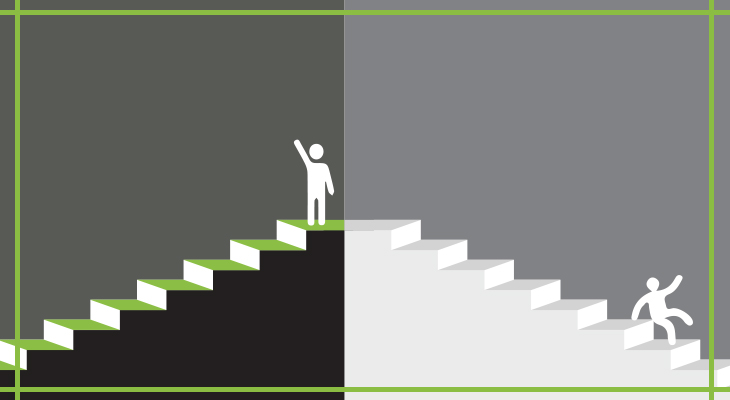Approved for 1/2 CEU
Time: 23:33
With nearly 25-33% of older adults age 65 and older experiencing a fall each year, falls pose a significant risk to the health and well being of older adults. In 2019, there were 34,000 older adult deaths related to falls. In order to reduce falls, a multi-disciplinary approach is required in order to address the wide array of risk factors. This presentation will review fall statistics, introduce risk factors, and provide an overview of the CDC’s STEADI (Stopping Elderly Accidents, Deaths, and Injuries) program.
Objectives:
At the conclusion of the presentation, the learner will be able to:
- Name two types of fall risk factors and state two examples of each.
- Name and describe the 3 core elements of STEADI
- State the 8 modifiable risk factors or assessment areas of the STEADI
SPEAKER: Jamie McKinley, PT, CEEAA
Jamie graduated with his degree in Physical Therapy from Northern Illinois University in 1998. Since that time, he has worked with a variety of populations including pediatrics, orthopedics, and geriatrics in settings including outpatient clinics, schools, and SNFs. Since 2010, he has been educating, mentoring, and consulting therapists on evidence-based programs specific to the geriatric population. In 2013, he completed his certification as an Exercise Expert for Aging Adults (CEEAA) from the Academy of Geriatric Physical Therapy. In his current position, Jamie services as Director of Clinical Services for Consonus Healthcare in which he develops, implements, and provides instruction and guidance on clinical programming for the geriatric population in the post-acute setting. In 2020, Jamie was named to the NASL Emerging Leader program.






